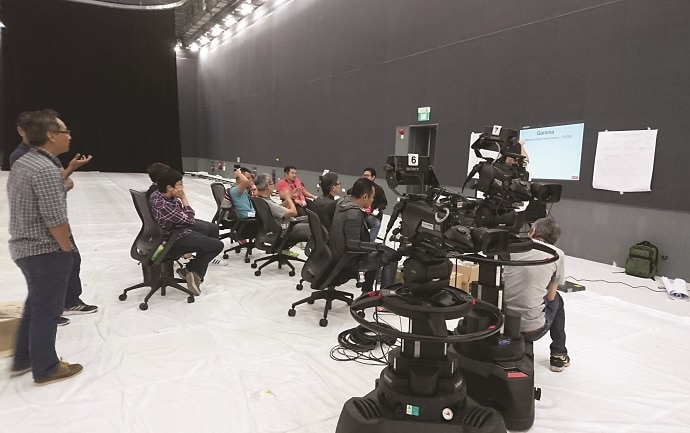Mediacorp stays ahead of the curve
Media operations today aren’t made up of simple, standalone islands. They are driven by interconnected, collaborative technologies that mesh together every aspect of day-to-day activities along the entire production chain.

With so much integration in the mix, media operators around the world have to tackle the same questions: When should they replace older systems with entirely new solutions? When should they try to extend equipment’s life by bolting on newer technologies?
In the case of Mediacorp, its move to a brand new 800,000 sq ft campus not only brought together what is undoubtedly Singapore’s most comprehensive range of media services under one roof, it also gave the company a unique opportunity to re-evaluate and streamline its media operations to a new end-to-end file-based workflow that links key infrastructural areas within its massive campus, ensuring seamless integration from ingest, non-linear post-production, multi-channel playout to media asset management.
Such an integration is key to Mediacorp’s continued success as a media operator with over 50 brands and products covering radio, television, magazines, newspapers, movies, digital and out-of-home media.
Thanks to Singapore’s excellent broadband network boasting a connectivity rate of over 99% and the proliferation of smart devices, the integration also allows Mediacorp to make further inroads in the new digital space including internet TV-on-demand, High Definition TV broadcast and Over-the-Top (OTT) interactive services.
HDC-2400 system cameras at one of Mediacorp’s production studios
As part of its integrated solution platform, Mediacorp also standardised the studio cameras in seven out of its 14 studios.
Working closely with Sony, it outfitted three of its key production studios with the highly rated HDC-2400 system camera. The three production studios selected produce a wide repertoire of high quality Chinese dramas and variety shows, many of which are televised outside Singapore.
The HDC-2400 was chosen not only for its excellent image quality but also for its 3G capability and beyond 1080/50P,59.94P format using the extra bandwidth: RGB 12bit output for creative shootings, 3D Transmission on one cable, extra fibre length up to 4km with double speed acquisition, gigabit Ethernet Trunk line and more.
For its three news studios, Mediacorp opted for the HDC-1700, a dual-format HD system camera that can also be upgraded to 4K resolution content creation as well as 4K Live HDR (High Dynamic Range).

The rise of mobile video viewing offers an opportunity as well as a challenge for content programmers to package and deliver content efficiently to best serve their audience and deliver returns.
Rajesh Sharma
AVP, Campus Technology Development Mediacorp Pte Ltd
Explains Rajesh Sharma, AVP, Campus Technology Development, Mediacorp Pte Ltd on the benefits of integration: “We had this rare opportunity of migrating to a brand new facility, and it made sense to evaluate our integration options. By standardising all our studio cameras, we can easily network all our studios to improve resource management and be able to control cameras from any control room.”
Mediacorp’s integrated platform also gave it the advantage of agility in responding to new challenges, one of which is the rise of OTT. Adds Rajesh, “We are seeing a disruption in the traditional media landscape with regards to how content is consumed. The rise of mobile video viewing offers an opportunity as well as a challenge for content programmers to package and deliver content efficiently to best serve their audience and deliver returns. For content producers such as Mediacorp, these are exciting times, and producing quality content that stands out is key to growth and having the right technology partners that can deliver high quality images can make a difference.”
Another key criterion in Mediacorp’s stringent selection process is colorimetry, which ensures consistent colour profiles throughout the imaging workflow.
Mediacorp turned to the renowned PVM series of OLED monitors for final monitoring of studio outputs before sending to transmission, while the LCD monitors were used to monitor sources for contribution and distribution.
“We found a marked improvement in our colour quality since switching to Sony cameras and monitors, especially when it comes to Asian skin tones,” adds Rajesh.
With its new integrated facility, Mediacorp has chalked up another impressive milestone and cemented its position as a media operator that’s always ahead of the curve.